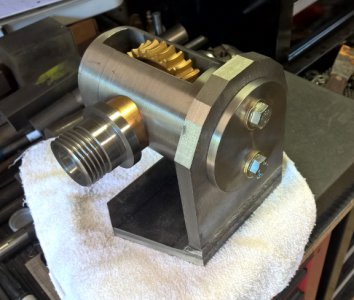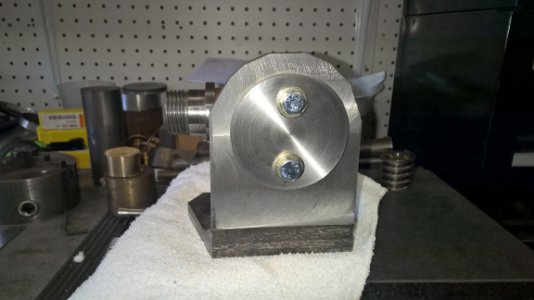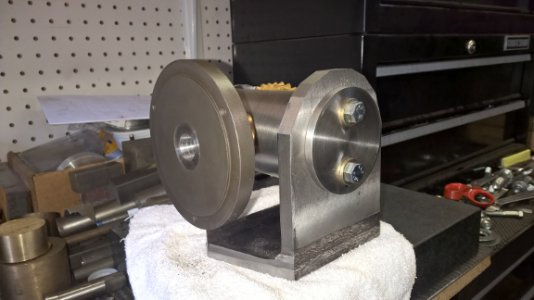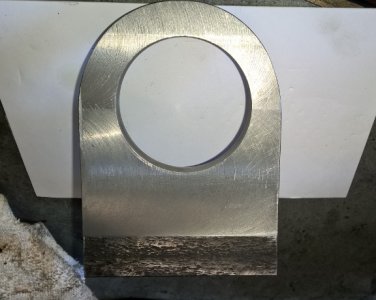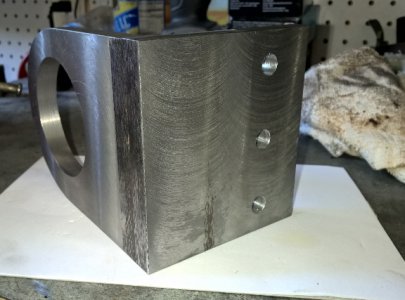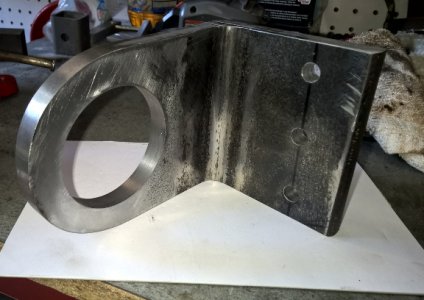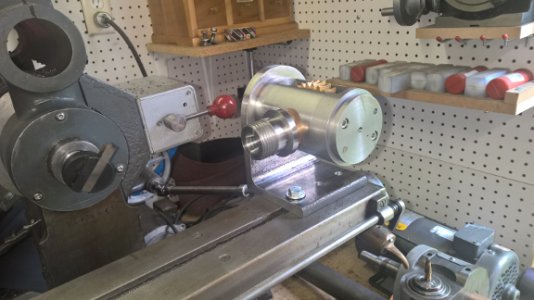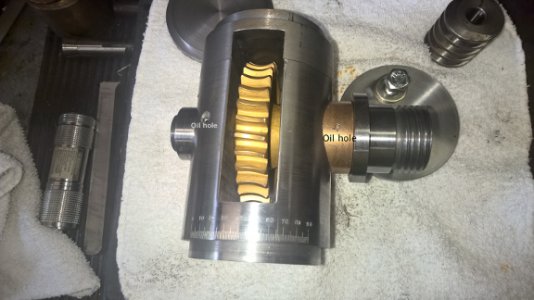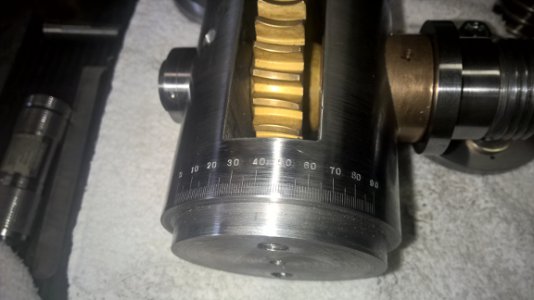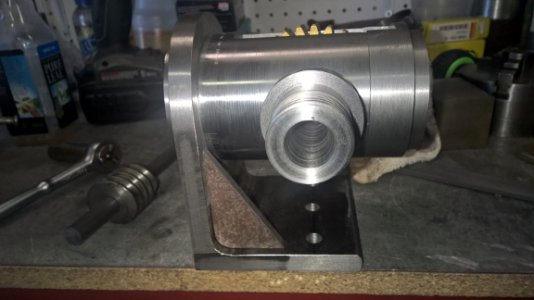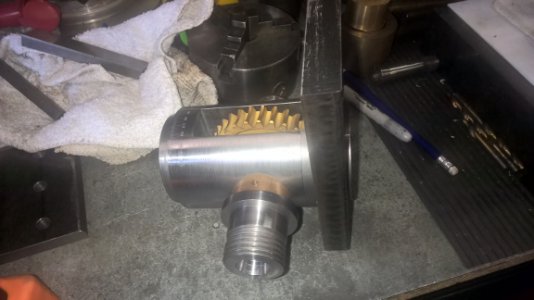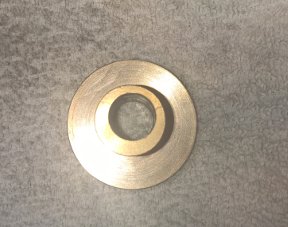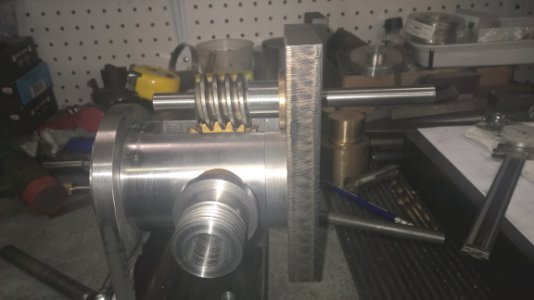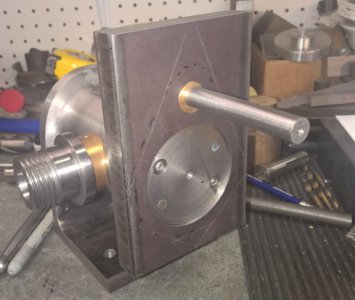Was a hard day in the shop, but an enjoyable one. The first thing I did was cut the excess off the worm mounting plate.
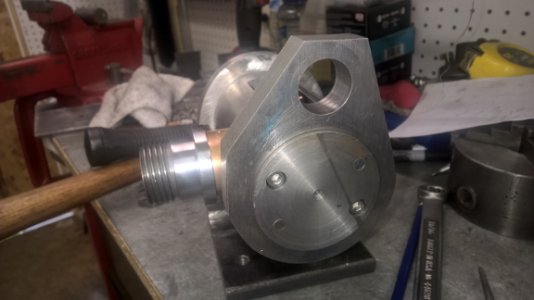
If you notice , the worm hole (hee-hee) was bored out form .750" to 1.063". In this photo , the plate is all the way on the body. This was confusing in the previous photo yesterday. The trunnion sticks through .150". when the trunnion is clamped the worm plate will be sandwiched between the body and trunnion . The reason for making the hole larger is a major revision. My plan for disengaging the worm failed miserably and I had no back up plan. After 4 hours of thinking and machining blindly, I came up with a new plan, Thus the bigger hole.
Notice the plate has been trimmed and rounded, and sanded smooth. This plate will attach to the body with two set screws. The trunnion also captures the plate. it is a very sturdy setup. When the body is rotated, the plate rotates with it. There is a flat on the left side of the plate. I have plans for that. the flat on the top is there in case I need it later. If not the top will get rounded also.
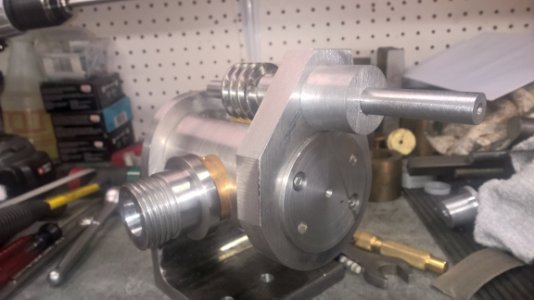
Here the worm is mounted with the eccentric. There is another piece that goes on the shaft to hold the index plates and sector arms. I had started it as one piece but because it was 3.375" long, it was hard to bore the .500" shaft hole the length, so I made it in two pieces and ill lock-tite them together.
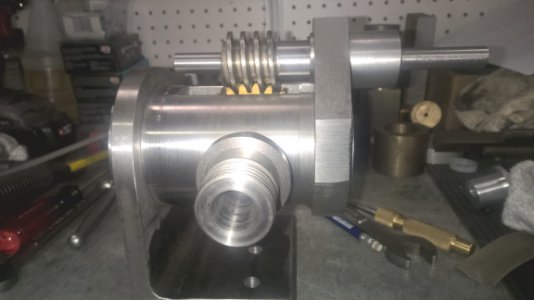
In this photo , the worm is engaged. By turning the eccentric bushing 90 degrees, the worm disengages as in the next photo.
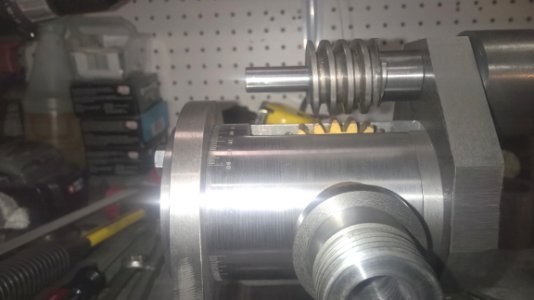
Here the bushing has been rotated 90 degrees and the spindle free turns for direct indexing. There will be a small lever to accomplish this. I think I will also spring to have the local engraving shop make me a couple plates. the first one will say "WORM" and have "IN at one end and "OUT at the other. I will put it on the flat on the top of the plate or on the top curve if I round it. I will also have a few tiny plates engraved that say "OIL" to install by the oil holes. I have oilers with a lift up cap I was thinking of using or look for some ball oilers. they would be nicer. I need to cut the end off the worm shaft and thread it for a nut. another option I am considering is a groove and "e" clip to hold the worm on the shaft.
So far there is about $30 in this project. I have built it from scraps mooched from scrap bins at a local industry and my own scrap box. The gears were supplied by my friend Nelson Collar and I designed around the gears. I wanted to keep it cheap, but I am so impressed with the way it is turning out I am going to spring for about $30 worth of brass to make the sector arms and index handles from brass. And another $30 for engraved plates. It will make it look real nice.

